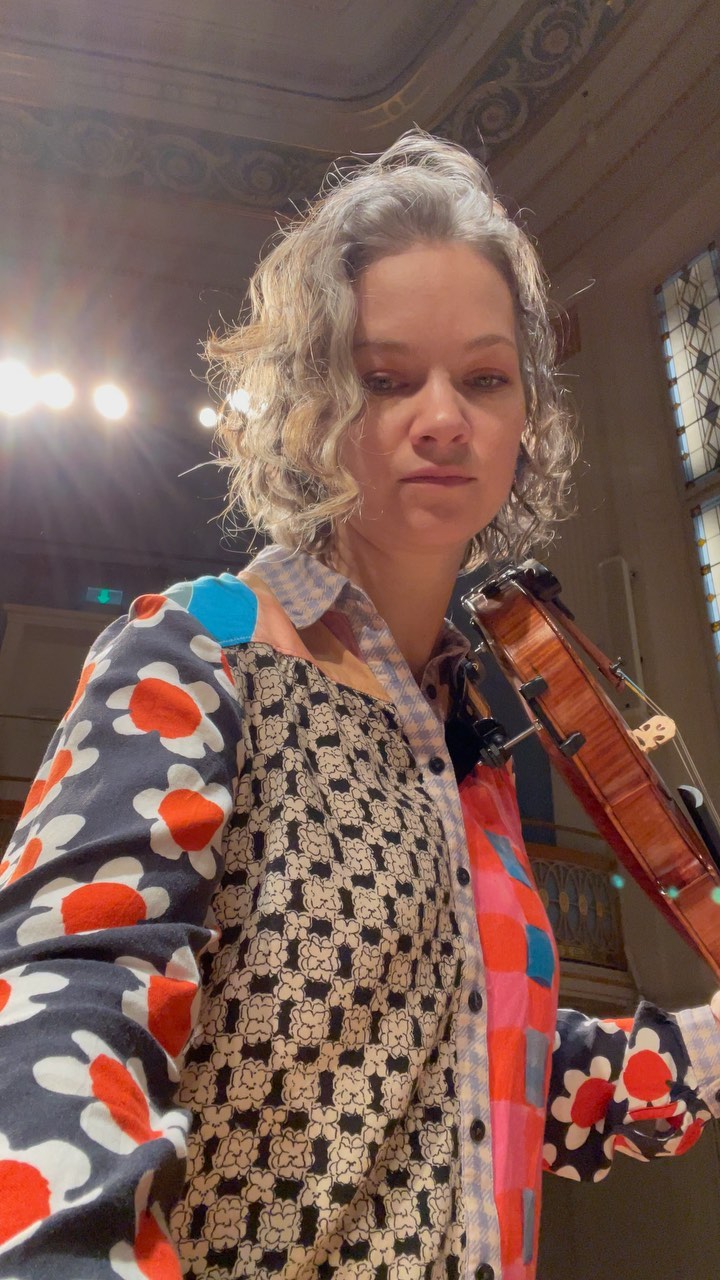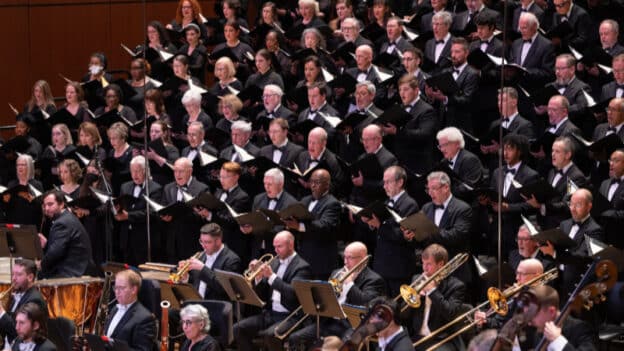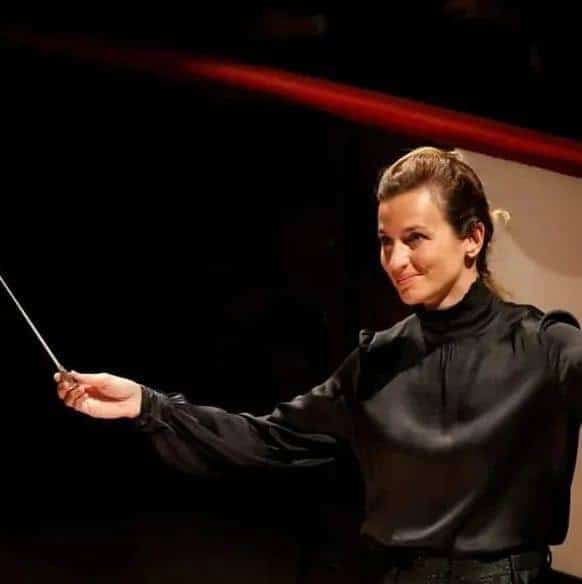America’s All-Star Orchestra proudly does not rehearse
UncategorizedThe conductor Gerard Schwarz has put together a symphony orchestra of leading players from 30 top ensembles. It gets together once a year to record music for internet and the television.
All the men wear the same company tie.
‘We don’t rehearse,’ says executive director Paul Schwendener. ‘We come together and record.’
He seems quite proud of that. Judge for yourselves.






Sounds very exciting. Who’s paying!
This promotional video is exactly like the project — completely unfocused as to the purpose, impact, or even target audience they have in mind.
It comes across to the layperson as a curiosity but one that is completely irrelevant.
It comes across to the professional musician as a huge Schwarz masturbation exercise.
wow, are you mad you didn’t get that gig or what? these are just some of the best musicians in the best orchestras doing their best to promote orchestral music. in an era of cuts and threats to orchestras throughout the world, can’t you try and be positive?
Having looked at the video above, I too wondered, “What is the point?” Thinking from the perspective of a youngster who knows little about classical music, I had so many questions. Who’s Albrechtsberger? Who’s Salieri? What’s a third horn and why was its addition so special? Then I checked the website and note that it appears on the face of it to be not just a Gerry Schwartz ego trip for the internet and television. The project is part of a much larger education programme run by the Kahn Institute. According to its media release –
“Khan Academy (www.khanacademy.org), a free educational website that reaches 10 million students per month in 200 countries, is launching a music education program from Music Director Gerard Schwarz and the All-Star Orchestra (www.allstarorchestra.org) the multi-Emmy-award-winning ensemble comprised of top players from symphony orchestras across America. The collaboration brings, for the first time, classical music to the already widely visited website that teaches math, science, economics, humanities and many other subjects.”
Now that to me is a very worthy idea, although I still know little about the non-profit Khan Institute. Even looking over its website, it’s a little hard to workout who is actually behind it, although it does have a list of impressive sponsors including the Bill & Melinda Gates Foundation and Bank of America.
Already 8 one-hour episodes have been recorded, each including a “popular symphonic score” and a contemporary piece by an American composer. And it is certainly impressive that each recording uses 19 cameras. Yet I do not see that the stated intention to create “a new format so that more people can enjoy, explore, and experience the life-changing wonder of symphonic music” has been achieved, unfortunately. It’s just the age-old format of yet another televised concert, but one with more detailed camerawork!
Despite there also being Schwarz’ analyses, why does each concert, for example, include whole symphonies? How many young people, again with no exposure to any classical music, will listen to the entire Shostakovich 5? Ah! Well, I assume that is because another objective is to have the vdos available for purchase on Naxos. So which is more important – the educational element or the commercial sales?
Then there is the “Education” section of the website. In this, there is what I believe could be a fascinating tool for introducing instruments and placing them in their orchestral context. Each work has a separate listing for each instrument in each movement (or sometimes groups of instruments). Yet, what does this contain? Take the flute, for example. The second movement of Dvořák’s New World has little solo flute work. But instead of perhaps a description of the instrument and the sound it produces accompanied by short edited excerpts, you hear/see the entire movement – and it is 2’20” before any flute is heard at all! How many students will come away with the thought that a flute is part of the brass section at the start of that movement?
I know it’s easy to knock a major project like this. But from what I can see, there is a huge missed educational opportunity here. Many have tried, but I don’t think anyone has done televised music education concerts better than Bernstein. I just looked again the episode which starts with the William Tell Overture – only “The Lone Ranger” part. Having captured the audience’s interest, clearly, interestingly and fascinatingly he introduces so much that is new and exciting to the youngsters and, importantly, actively involves them in everything he does. The Schwartz concept is different, it’s not nearly as well conceived and much is plain boring.
When I saw the headline “Masterpieces for the Masses” on the All-Star Orchestra website, I cringed. Having now looked through some of the material, I tend to agree with NEWYORKER’s verdict: it is a Gerard Schwartz ego trip!
I think including whole symphonies is a great idea. You can conjecture all you like as to how many people will bother to listen to them in their entirety, but the fact is that not including a whole symphony would guarantee that nobody listened to a whole symphony, whereas including a whole symphony gives people the *option* to listen to it.
I also think the idea of including lesser-known composers/works is an inspired idea — I am sick and tired of ‘educational’ initiatives that continually recycle a very small canon of works, ostensibly in the name of ‘accessibility’.
I’m all for including the contemporary works. I applaud you for believing that students who have had no exposure to classical music will sit through a 45-minute symphony on You Tube. I just disagree. As a follow up to an earlier introduction to the orchestra, the instruments, their sounds, blends, outlines of the work, what to listen for, etc. – perhaps. Without that I believe it’s a sure way to turn the huge majority of listeners off.
As a member of this orchestra, allow me to convey that the ensemble is fabulous. Everyone selected is there for a reason – to make music to the best of their abilities. Believe me, it works. The musicians are also treated with utter respect and cordiality which is greatly satisfying and appreciated. As for Maestro Schwarz, the brains behind the scenes and our conductor, more power to you for your valiant effort to obtain the necessary funding and most importantly to get classical music to a broader audience around the world. Off that note, probably too much of the concertmaster’s loquacious words in this promo video. Others interviewed might have been more effective.
From what I have seen, I certainly agree. In terms of being televised concert programmes, the playing, recorded sound and vision are excellent (albeit with very traditional camerawork). But I still wonder what is the aim of the project? There are already complete versions of some of the works available on You Tube if young people wish to listen to them, including Karajan with the Vienna Phil and Barenboim with the CSO performing Tchaik 4, and Rostropovich and Bernstein conducting Shostakovich 5. The Khan Academy states the primary purpose is educational. The A-SO website states similar aims. And it is on that score I feel it fails. The extra materials available on the A-SO website do little to change my view.
I have looked at the PBS website as the programmes will be/have been aired there. The announcer on it’s trailer states that the orchestra got together “to produce a television series of masterpieces.” Having just looked at the entire Tchaikovsky programme, there is at the outset a brief explanation from Gerard Schwarz with some historical information and then very short clips from a critic and some members of the orchestra. In other words, precisely the sort of information you’d get from a programme note in a ‘live’ concert. There is then no short introduction to guide listeners through each movement. The work is just played complete. Not even any form of ‘subtitle’ or video insert to help new listeners.
The impression I get is that no matter how laudable the project, it completely falls, as I suggested earlier, between two stools – the commercial and the educational. The commercial wins hands down. Very sadly, it’s a missed educational opportunity.
Who will be the all-star conductors? Certainly not Schwarz.